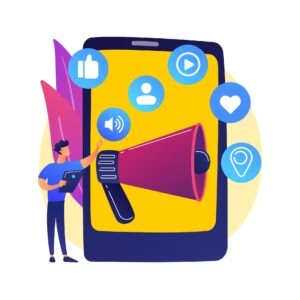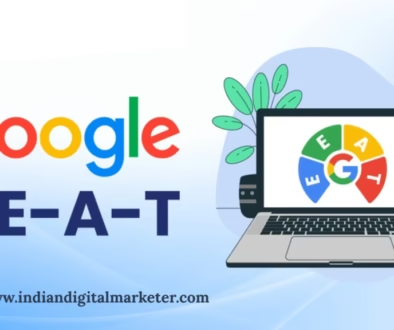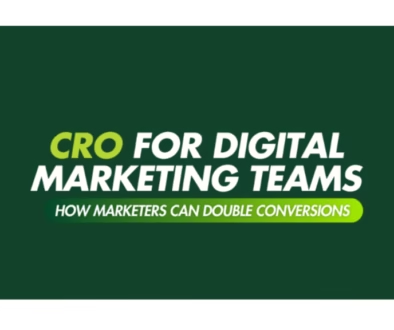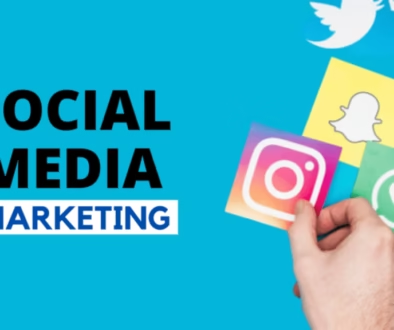Powerful Digital Marketing Tactics to Boost Your Sales
What is Digital Marketing?
Digital marketing refers to promoting products or services using digital platforms such as social media, search engines, websites, email, and mobile apps. Unlike traditional marketing, which relies on TV, radio, or print ads, digital-marketing takes place online, allowing businesses to reach their target audience in a much more direct and measurable way.
Why is Digital Marketing Important?
The shift to digital spaces isn’t just a trend; it’s a necessity. Here are a few reasons why digital marketing is so powerful:
-
Wide Reach: Over 5 billion people use the internet globally, making it one of the best places to connect with your audience.
-
Cost-Effective: Digital-marketing is far more budget-friendly than traditional advertising methods. Small businesses can run effective campaigns without spending a fortune.
-
Targeted Approach: Digital tools allow businesses to target specific demographics, ensuring their message reaches the right people at the right time.
-
Measurable Results: With digital-marketing, businesses can track campaign performance in real-time, making it easy to identify what’s working and what’s not.

Key Components of Digital Marketing
Digital-marketing is a vast field that includes several channels and strategies. Let’s dive into the most popular ones:
1. Search Engine Optimization (SEO)
SEO is about improving your website’s visibility on search engines like Google. When someone searches for a product or service you offer, you want your website to appear at the top of the results.
-
Example: If you own a bakery in Mumbai, SEO can help your website rank for keywords like “Best Bakery in Mumbai.”
Pro Tip: Focus on relevant keywords (like “Digital Marketing”), create high-quality content, and ensure your site is mobile-friendly.
2. Social Media Marketing
Platforms like Instagram, Facebook, LinkedIn, and TikTok are great for building a connection with your audience. Through engaging posts, stories, and ads, brands can create awareness and boost sales.
-
Example: A clothing brand can showcase its new collection via Instagram Reels, adding fun trends to attract younger audiences.
3. Content Marketing
Content is at the heart of digital marketing. It includes blogs, videos, infographics, podcasts, and more. The idea is to provide valuable, relevant content that attracts and retains your audience.
-
Example: A tech company may write a blog titled “5 Ways to Protect Your Data Online” to educate users while subtly promoting their cybersecurity software.
4. Email Marketing
Despite being one of the oldest forms of digital marketing, email marketing remains incredibly effective. It’s a direct line to your audience’s inbox, making it perfect for personalized communication.
-
Example: An e-commerce store can send newsletters with exclusive discounts or updates on new arrivals.
5. Pay-Per-Click (PPC) Advertising
PPC ads allow businesses to pay for clicks to their website, ensuring they appear at the top of search engine results. Google Ads and Bing Ads are popular platforms for this.
-
Example: A travel agency can use PPC ads for keywords like “Affordable Bali Vacation Packages” to attract tourists.
6. Influencer Marketing
Collaborating with influencers—individuals with a significant online following—can help brands gain credibility and reach niche audiences.
-
Example: A skincare brand partnering with a beauty blogger to review their products.
How to Get Started with Digital Marketing
Are you new to digital marketing? Here are some easy steps to get started:
1. Define Your Goals
What do you want to achieve? More website traffic? Increased sales? Better engagement? Clear goals will guide your strategy.
2. Know Your Audience
Understand who your ideal customers are—their age, interests, online habits, and pain points. This helps you tailor your marketing efforts.
3. Choose the Right Channels
Not every platform will suit your business. A B2B company might focus on LinkedIn, while a fashion brand could thrive on Instagram.
4. Create Quality Content
Engaging, informative, and visually appealing content is key. Use videos, blogs, and images to communicate your message effectively.
5. Monitor and Optimize
Track the performance of your campaigns using tools like Google Analytics, and make data-driven decisions to improve your results.
Benefits of Digital Marketing
If you’re still wondering why you should invest in digital marketing, here’s what it can do for your business:
-
Boost Brand Awareness: By being active online, your brand becomes more recognizable.
-
Improve Customer Engagement: You can interact directly with your audience through comments, messages, and live sessions.
-
Drive Conversions: With targeted strategies, you can turn website visitors into paying customers.
-
Stay Competitive: If your competitors are online and you’re not, you risk being left behind.
Challenges in Digital Marketing
While digital marketing has many advantages, it’s not without its challenges:
-
High Competition: Standing out in a crowded digital space can be tough.
-
Constantly Evolving Trends: Platforms and algorithms change frequently, requiring marketers to stay updated.
-
Data Privacy Issues: Ensuring compliance with regulations like GDPR is essential.
-
Content Overload: Creating unique and engaging content amidst an overflow of information is challenging.
Bottom Line –
We hope you have got basic idea about digital marketing and it’s channels. We at IDM focus on teaching those digital marketing channel execution through our digital marketing courses in pune. During training we actually promote live business using those channels and learn industry oriented digital marketing techniques.



